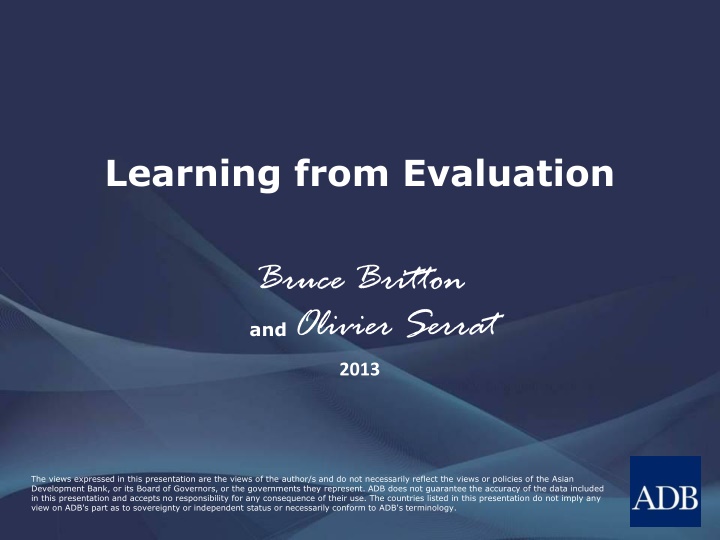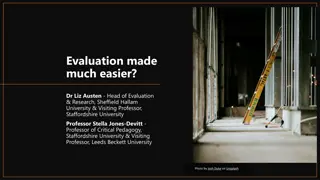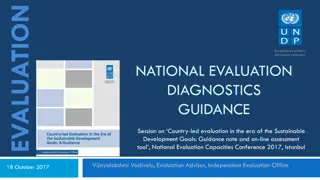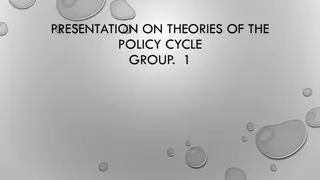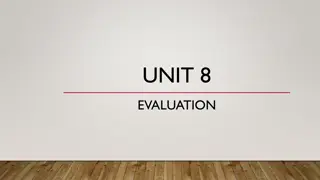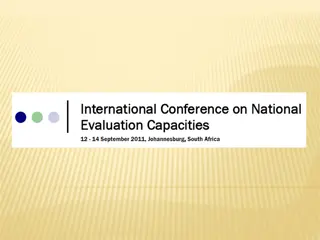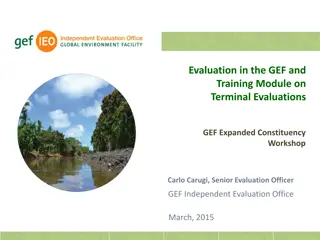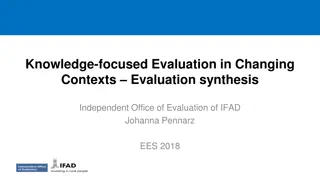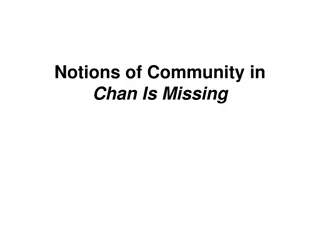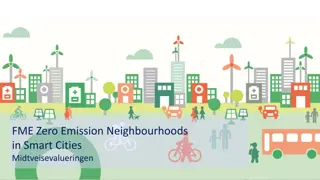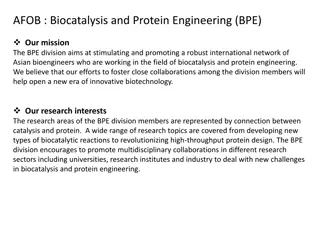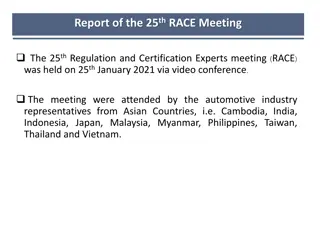Learning from Evaluation in Asian Policy Contexts
Explore the perspectives of Bruce Britton and Olivier Serrat on learning from evaluation in the Asian policy realm. The presentation stresses that the views expressed are those of the authors and may not align with Asian policies.
Download Presentation

Please find below an Image/Link to download the presentation.
The content on the website is provided AS IS for your information and personal use only. It may not be sold, licensed, or shared on other websites without obtaining consent from the author.If you encounter any issues during the download, it is possible that the publisher has removed the file from their server.
You are allowed to download the files provided on this website for personal or commercial use, subject to the condition that they are used lawfully. All files are the property of their respective owners.
The content on the website is provided AS IS for your information and personal use only. It may not be sold, licensed, or shared on other websites without obtaining consent from the author.
E N D
Presentation Transcript
Learning from Evaluation Bruce Britton andOlivier Serrat 2013 The views expressed in this presentation are the views of the author/s and do not necessarily reflect the views or policies of the Asian Development Bank, or its Board of Governors, or the governments they represent. ADB does not guarantee the accuracy of the data included in this presentation and accepts no responsibility for any consequence of their use. The countries listed in this presentation do not imply any view on ADB's part as to sovereignty or independent status or necessarily conform to ADB's terminology.
Define: Monitoring and Evaluation According to the Organisation for Economic Co-operation and Development Monitoring is the systematic and continuous assessment of progress of a piece of work over time which checks that things are going according to plan and enables positive adjustments to be made. Evaluation is the systematic and objective assessment of an ongoing or completed project, program, or policy, its design and implementation. The aim of evaluation is to determine the relevance and fulfillment of objectives, effectiveness, efficiency, impact, and sustainability. An evaluation should provide information that is credible and useful, enabling the incorporation of lessons learned into decision-making processes.
The Planning, Monitoring, and Evaluation Triangle Planning Recommendations for future planning Plans show what needs to be monitored Plans show what to evaluate Monitoring revises plans during project implementation Evaluation highlights areas that need close monitoring Evaluation Monitoring Monitoring provides data to be used in evaluation
Main Types of Evaluation Program Evaluation (Geographic or Thematic) Summative or Formative Evaluation Self- or Independent Evaluation Impact Evaluation Internal or External Evaluation Project Evaluation Real-Time Evaluation A quality evaluation should provide credible and useful evidence to strengthen accountability for results or contribute to learning processes, or both.
The Results Chain Impact Outcome Inputs Activities Outputs
Outputs, Outcomes, Impacts Outputs The products, capital goods, and services that result from a project; they may also include changes resulting from the project that are relevant to the achievement of its outcome. Impacts The positive and negative, primary and secondary, long- term effects produced by a project, directly or indirectly, intended or unintended. Outcomes The likely or achieved short-term and medium-term effects of a project's outputs.
OECD-DAC Evaluation Criteria Relevance Examines the extent to which the objectives of a project matched the priorities or policies of major stakeholders (including beneficiaries) Effectiveness Examines whether outputs led to the achievement of the planned outcome Efficiency Assesses outputs in relation to inputs Impact Assesses what changes (intended and unintended) have occurred as a result of the work Sustainability Looks at how far changes are likely to continue in the longer term
The Results Chain and the OECD-DAC Evaluation Criteria Needs Impact Outcome Inputs Activities Outputs Objective Relevance Efficiency Effectiveness Sustainability
Challenges and Limits to Management Challenge of Monitoring and Evaluation Degree of Control Logic What the project is expected to contribute to Impact Increasing Difficulty Decreasing Control Outcome What the project can be expected to achieve and be accountable for Outputs What is within the direct control of the project's management Activities Inputs
Indicators It is important not to confuse indicators with outputs, outcomes, or impacts. Achieving the expected change in the indicators should not become the main purpose of a project. An indicator is a quantitative or qualitative factor or variable that offers a means to measure accomplishment, reflects the changes connected with a project, and helps assess performance. Indicators do not provide proof so much as a reliable sign that the desired changes are happening (or have happened).
Planning and the Use of Logic Models In development assistance, most projects are planned using logic models such as the logical framework (logframe). Logic models provide a systematic, structured approach to the design of projects. Logic models involve determining the strategic elements (inputs, outputs, outcome, and impact) and their causal relationships, indicators, and the assumptions or risks that may influence success or failure. Logic models can facilitate the planning, implementation, and evaluation of projects; however, they have significant limitations that can affect the design of evaluation systems.
The Limitations of Logic Models Usually assume simple, linear cause-effect development relationships Overlook or undervalue unintended or unplanned outcomes Do not make explicit the theory of change underlying the initiative Do not cope well with multi-factor, multi-stakeholder processes Undervalue creativity and experimentation in the pursuit of long-term, sustainable impact (the "lockframe" problem) Encourage fragmented rather than holistic thinking Require a high level of planning capacity
Purposes of Evaluation To provide a basis for accountability, including the provision of information to the public To improve the development effectiveness of future policies, strategies, and operations through feedback of lessons learned Accountability Learning
Does Evaluation Have to Be Either/Or? Evaluation for Accountability Evaluation for Learning Evaluation for Accountability Evaluation for Learning
What is Accountability? Accountability is the obligation to demonstrate that work has been conducted in compliance with agreed rules and standards or to report fairly and accurately on performance results vis- -vis mandated roles and/or plans. This may require a careful, even legally defensible, demonstration that the work is consistent with the contract aims. Accountability is about demonstrating to donors, beneficiaries, and implementing partners that expenditure, actions, and results are as agreed or are as can reasonably be expected in a given situation.
Evaluation for Accountability Relates to standards, roles, and plans Is shaped by reporting requirements Focuses on effectiveness and efficiency Measures outputs and outcomes against original intentions Has a limited focus on the relevance and quality of the project Overlooks unintended outcomes (positive and negative) Concerns mostly single-loop learning
What is Learning? Learning is the acquisition of knowledge or skills through instruction, study, and experience. Learning is driven by organization, people, knowledge, and technology working in harmony urging better and faster learning, and increasing the relevance of an organization. Learning is an integral part of knowledge management and its ultimate end. Data Information Knowledge Wisdom Know What Know How Know Why Reductionist Systemic
Evaluation for Learning Understands how the organization has helped to make a difference Recognizes the difference an organization has made Explores assumptions specific to each component of a project Shares the learning with a wide audience
The Experiential Learning Cycle More Abstract Planning More Action Acting Learning Reflecting More Reflection More Concrete
Evaluation for Accountability and Evaluation for Learning Item Evaluation for Accountability Evaluation for Learning Basic Aim The basic aim is to find out about the past. The basic aim is to improve future performance. Emphasis Emphasis is on the degree of success or failure. Emphasis is on the reasons for success or failure. Favored by Parliaments, treasuries, media, pressure groups Development agencies, developing countries, research institutions, consultants Selection of Topics Topics are selected based on random samples. Topics are selected for their potential lessons. Status of Evaluation Evaluation is an end product. Evaluation is part of the project cycle.
Evaluation for Accountability and Evaluation for Learning Item Evaluation for Accountability Evaluation for Learning Status of Evaluators Evaluators should be impartial and independent. Evaluators usually include staff members of the aid agency. Importance of Data from Evaluations Data are only one consideration. Data are highly valued for the planning and appraising of new development activities. Importance of Feedback Feedback is relatively unimportant. Feedback is vitally important.
Both/And? Knowledge creation; generating generalizable lessons Learning Account- ability Performance Improvement; Increased Development Effectiveness Reporting; ensuring compliance with plans, standards, or contracts
Programs Should Be Held Accountable For Asking difficult questions Maintaining a focus on outcome Identifying limitations, problems, and successes Taking risks rather than "playing it safe" Actively seeking evaluation and feedback Actively challenging assumptions Identifying shortcomings and how they might be rectified Effectively planning and managing based on monitoring data Acting on findings from evaluation Generating learning that can be used by others
What is Feedback? Evaluation feedback is a dynamic process that involves the presentation and dissemination of evaluation information in order to ensure its application into new or existing projects. Feedback, as distinct from dissemination of evaluation findings, is the process of ensuring that lessons learned are incorporated into new operations.
Actions to Improve the Use of Evaluation Feedback Understand how learning happens within and outside an organization Identify obstacles to learning and overcome them Assess how the relevance and timeliness of evaluation feedback can be improved Tailor feedback to the needs of different audiences Involve stakeholders in the design and implementation of evaluations and the use of feedback results
Who Can Learn from Evaluation? The wider community People who are or will be planning, managing, or executing similar projects in the future The people who contribute to the evaluation (including direct stakeholders) The people who conduct the evaluation The people who commission the evaluation The beneficiaries who are affected by the work being evaluated The people whose work is being evaluated (including implementing agencies)
Why We Need a Learning Approach to Evaluation Learning should be at the core of every organization to enable adaptability and resilience in the face of change. To reap these opportunities, evaluation must be designed, conducted, and followed-up with learning in mind. Evaluation provides unique opportunities to learn throughout the management cycle of a project.
How Can Stakeholders Contribute to Learning from Evaluation? Help design the terms of reference for the evaluation Be involved in the evaluation process as part of the evaluation team or reference group or as a source of information) Discuss and respond to the analyses and findings Discuss and respond to recommendations Use findings to influence future practice or policy Review the evaluation process
What is a "Lesson"? Lessons learned are findings and conclusions that can be generalized beyond the evaluated project. In formulating lessons, the evaluators are expected to examine the project in a wider perspective and put it in relation to current ideas about good and bad practice.
What is Needed to Learn a "Lesson"? Triangulate: what other sources confirm the lesson? Generalize: what can be learned from this and what could be done in the future to avoid the problem or repeat the success? Analyze: why was there a difference and what were its root causes? Identify: was there a difference between what was planned and what actually happened? Reflect: what happened? At this point, we have a lesson identified but not yet learned: to truly learn a lesson one must take action.
What Influences Whether a Lesson is Learned? Political Factors Inspired Leadership The Quality of the Lesson Access to the Lesson Conventional Wisdom Chance Vested Interests Risk Aversion Bandwagons Pressure to Spend Bureaucratic Inertia
Quality Standards for Evaluation Use and Learning Systematic storage, dissemination, and management of the evaluation report is ensured to provide easy access to all partners, reach target audiences, and maximize the benefits of the evaluation. The evaluation is delivered in time to ensure optimal use of results. Conclusions, recommendatio ns, and lessons are clear, relevant, targeted, and actionable so that the evaluation can be used to achieve its intended accountability and learning objectives. The evaluation is designed, conducted, and reported to meet the needs of its intended users.
Monitoring and Evaluation Systems as Institutionalized Learning Learning must be incorporated into the overall management cycle of a project through an effective feedback system. Information must be disseminated and available to potential users in order to become applied knowledge. Learning is also a key tool for management and, as such, the strategy for the application of evaluative knowledge is an important means of advancing towards outcomes.
A Learning Approach to Evaluation In development assistance, the overarching goal for evaluation is to foster a transparent, inquisitive, and self-critical organization culture across the whole international development community so we can all learn to do better.
Eight Challenges Facing Learning-Oriented Evaluations The inflexibility of logic The demands for models accountability and impact The constraints created by rigid reporting frameworks The constraints of quantitative indicators Learning considered as a knowledge commodity Involving stakeholders Underinvestment in the architecture of knowledge management and learning Underinvestment in evaluation
Focus of the Terms of Reference for an Evaluation Evaluation Purpose Project Background Stakeholder Involvement Evaluation Questions Findings, Conclusions, and Recommendations Methodology Work Plan and Schedule Deliverables
Building Learning into the Terms of Reference for an Evaluation Make the drafting of the terms of reference a participatory activity involve stakeholders if you can Spend time getting the evaluation questions clear and include questions about unintended outcomes Consider the utilization of the evaluation from the outset who else might benefit from it? Ensure there is follow- up by assigning responsibilities for implementing recommendations Ensure that the "deliverables" include learning points aimed at a wide audience Build in diverse reporting and dissemination methods for a range of audiences Build in a review of the evaluation process
Why Questions Are the Heart of Evaluation for Learning Questions make it easier to design the evaluation: what data to gather, how, and from whom? Answers to questions can provide a structure for findings, conclusions, and recommend ations Questions cut through bureaucracy and provide a meaningful focus for evaluation Seeking answers to questions can motivate and energize Learning is best stimulated by seeking answers to questions
Criteria for Useful Evaluation Questions Data can be used to answer each question There is more than one possible answer to each question: each question is open and its wording does not pre-determine the answer The primary intended users want to answer the questions: they care about the answers The primary users want to answer the questions for themselves, not just for someone else The intended users have ideas about how they would use the answers to the questions: they can specify the relevance of the answers for future action
Utilization-Focused Evaluation Utilization-focused evaluation is done for and with specific intended primary users for specific intended uses. It begins with the premise that evaluations should be judged by their utility and actual use. It concerns how real people in the real world apply evaluation findings and experience the evaluation process. Therefore, the focus in utilization-focused evaluation is intended use by intended users.
The Stages of Utilization-Focused Evaluation 5. 4. Analyze and interpret findings, reach conclusions, and make recommendations Disseminate evaluation findings 1. Identify primary intended users 2. Gain commitment and focus the evaluation 3. Decide on evaluation methods
Potential Evaluation Audiences Program Staff Media Program Managers Policy Makers Board Members Program Funders Program Clients NGOs Researchers Other Agencies
Target Audiences for Evaluation Feedback
Conceptual Use of Evaluation Genuine Learning Conceptual use is about generating knowledge in and understanding of a given area. Then, people think about the project in a different way. Over time and given changes in the contextual and political circumstances surrounding the project, conceptual use can lead to significant changes.
Instrumental Use of Evaluation Practical Application The evaluation directly affects decision-making and influences changes in the program under review. Evidence for this type of utilization involves decisions and actions that arise from the evaluation, including the implementation of recommendations.
Process Use of Evaluation Learning by Doing Process use concerns how individuals and organizations are impacted as a result of participating in an evaluation. Being involved in an evaluation may lead to changes in the thoughts and behaviors of individuals which may then lead to beneficial cultural and organizational change. Types of use that precede lessons learned include learning to learn, creating shared understanding, developing networks, strengthening projects, and boosting morale.
Symbolic Use of Evaluation Purposeful Non-Learning Symbolic use means that evaluations are undertaken to signify the purported rationality of the agency in question. Hence one can claim that good management practices are in place.
Political Use of Evaluation Learning is Irrelevant Evaluation occurs after key decisions have been taken. The evaluation is then used to justify the pre-existing position, e.g., budget cuts to a program.
Factors That Affect Utilization Relevance of the findings, conclusions, and recommendations Credibility of the evaluators Quality of the analysis The evaluator's communication practices Timeliness of reporting Actual findings The organizational climate, e.g., decision-making, political, and financial The attitudes of key individuals towards the evaluation The organizational setting
